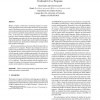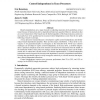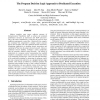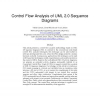96
Voted
POPL
1994
ACM
15 years 4 months ago
1994
ACM
Modern computer architectures increasingly depend on mechanisms that estimate future control flow decisions to increase performance. Mechanisms such as speculative execution and p...
89
Voted
CC
1994
Springer
15 years 4 months ago
1994
Springer
: Flow grammars provide a new mechanism for modelling control flow in flow analyzers and code optimizers. Existing methods for representing control flow are inadequate in terms of ...
93
Voted
MICRO
1999
IEEE
15 years 4 months ago
1999
IEEE
Branch mispredictions are a major obstacle to exploiting instruction-level parallelism, at least in part because all instructions after a mispredicted branch are squashed. However...
95
Voted
ISCA
1999
IEEE
15 years 4 months ago
1999
IEEE
Modern compilers must expose sufficient amounts of Instruction-Level Parallelism (ILP) to achieve the promised performance increases of superscalar and VLIW processors. One of the...
83
Voted
PLDI
1999
ACM
15 years 4 months ago
1999
ACM
Whole program paths (WPP) are a new approach to capturing and representing a program’s dynamic—actually executed—control flow. Unlike other path profiling techniques, which ...
106
Voted
ICESS
2005
Springer
15 years 6 months ago
2005
Springer
PeaCE(Ptolemy extension as a Codesign Environment) was developed for the hardware and software codesign framework which allows us to express both data flow and control flow. The fF...
ECMDAFA
2005
Springer
15 years 6 months ago
2005
Springer
This article presents a control flow analysis methodology based on UML 2.0 sequence diagrams (SD). In contrast to the conventional code-based control flow analysis techniques, thi...




